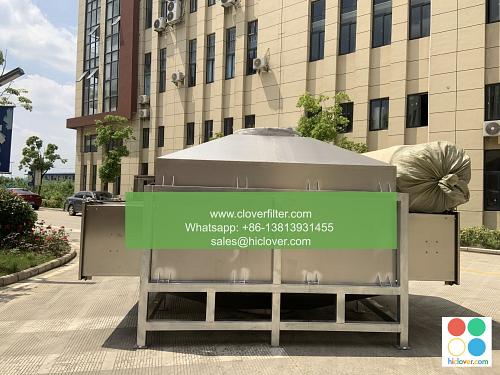Air Filter Installation for Commercial Buildings: A Tutorial

Air filter installation is a crucial aspect of maintaining good indoor air quality (IAQ) in commercial buildings, which is essential for the health, comfort, and productivity of occupants. In this tutorial, we will guide you through the process of installing air filters in commercial buildings, highlighting various application areas and key considerations.
Introduction to Air Filter Installation
Commercial buildings require a robust heating, ventilation, and air conditioning (HVAC) system to maintain a comfortable indoor environment. Air filters play a vital role in this system, capturing airborne pollutants, dust, and other contaminants that can compromise IAQ. Effective air filter installation is critical to ensure the optimal performance of the HVAC system, minimize energy consumption, and prevent costly repairs.
Types of Air Filters
There are several types of air filters available for commercial buildings, each with its unique characteristics, advantages, and applications. Some common types of air filters include:
- Pre-filters: Designed to capture large particles and debris, pre-filters are often used in conjunction with other filters to extend their lifespan.
- HEPA (High Efficiency Particulate Air) filters: Capable of capturing 99.97% of particles as small as 0.3 microns, HEPA filters are ideal for applications requiring high-level filtration, such as hospitals, laboratories, and clean rooms.
- Activated carbon filters: Effective in removing gases, odors, and volatile organic compounds (VOCs), activated carbon filters are commonly used in commercial kitchens, bathrooms, and indoor swimming pools.
- UV (Ultraviolet) filters: Using UV light to kill bacteria, viruses, and other microorganisms, UV filters are often employed in healthcare facilities, food processing plants, and other areas where sanitation is critical.
- Offices and Workspaces: Maintain good IAQ and prevent the spread of airborne illnesses in offices and workspaces.
- Hospitals and Healthcare Facilities: Ensure high-level filtration to prevent the spread of infections and maintain a sterile environment.
- Commercial Kitchens: Remove grease, odors, and VOCs to maintain a clean and safe cooking environment.
- Indoor Swimming Pools: Control humidity, remove chlorine odors, and prevent the growth of bacteria and mold.
- Warehouses and Industrial Facilities: Protect equipment and personnel from airborne contaminants, such as dust, pollen, and chemicals.
- Shut off the HVAC system to prevent any accidents or injuries.
- Locate the air filter housing and remove any screws or clips holding it in place.
- Pull out the old air filter and dispose of it properly.
- Inspect the air filter housing and ensure it is clean and free of debris.
- Install the new air filter, making sure it is properly seated and secure.
- Replace the air filter housing and ensure it is properly sealed.
- Turn on the HVAC system and check for any leaks or air filter damage.
- Air filter type and quality
- Building occupancy and usage
- Indoor and outdoor air quality
- Local regulations and standards
Application Areas for Air Filter Installation
Air filter installation is essential in various commercial building applications, including:
Step-by-Step Air Filter Installation Guide
To ensure proper air filter installation, follow these steps:
Maintenance and Replacement Schedules
Regular maintenance and replacement of air filters are crucial to ensure optimal performance and extend the lifespan of the HVAC system. The frequency of air filter replacement depends on various factors, including:
Typically, air filters should be replaced every 1-3 months, depending on the application and usage.
Conclusion
Air filter installation is a critical aspect of maintaining good IAQ in commercial buildings. By understanding the different types of air filters, application areas, and installation procedures, facility managers and building owners can ensure a healthy, comfortable, and productive indoor environment. Remember to follow the manufacturer’s guidelines, maintain regular replacement schedules, and consult with a professional if you are unsure about any aspect of air filter installation. It seems like you’re ready to start a conversation or need assistance with something, but you haven’t specified what’s on your mind yet. Could you give me a bit more detail about what you’re looking for? Are you seeking information on a particular topic, wanting to chat, or is there something else I can help you with?

